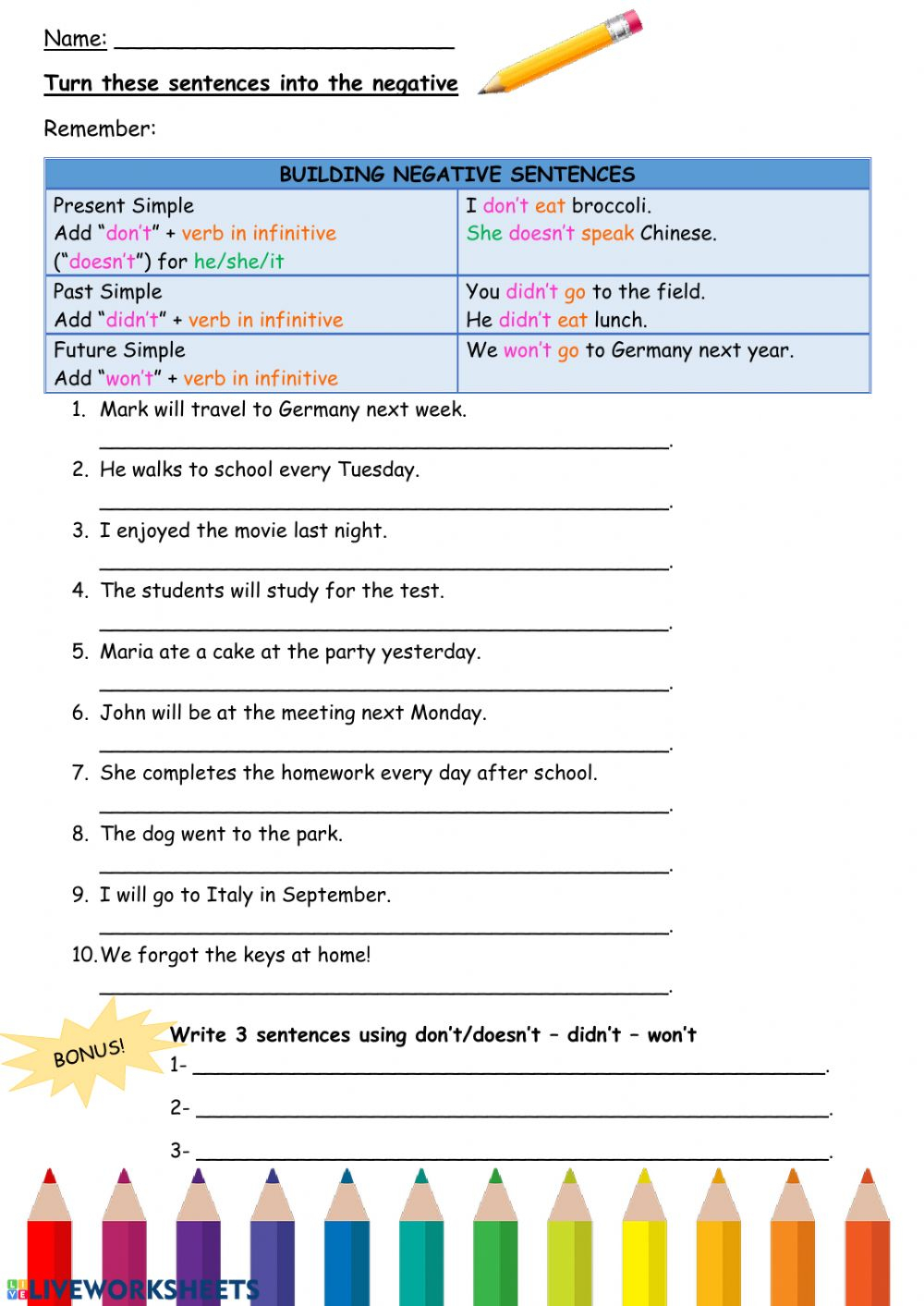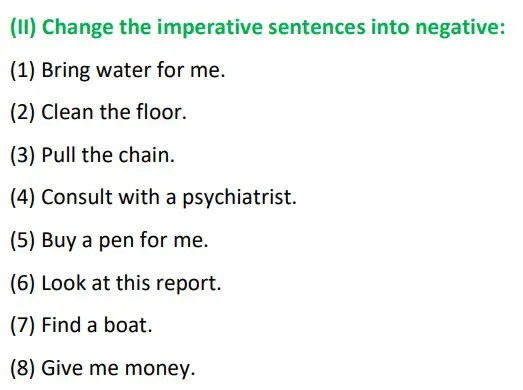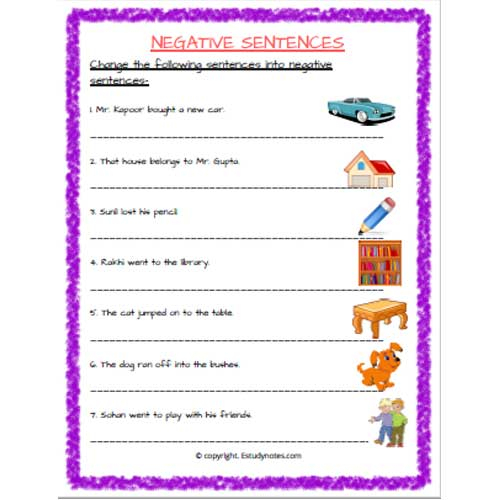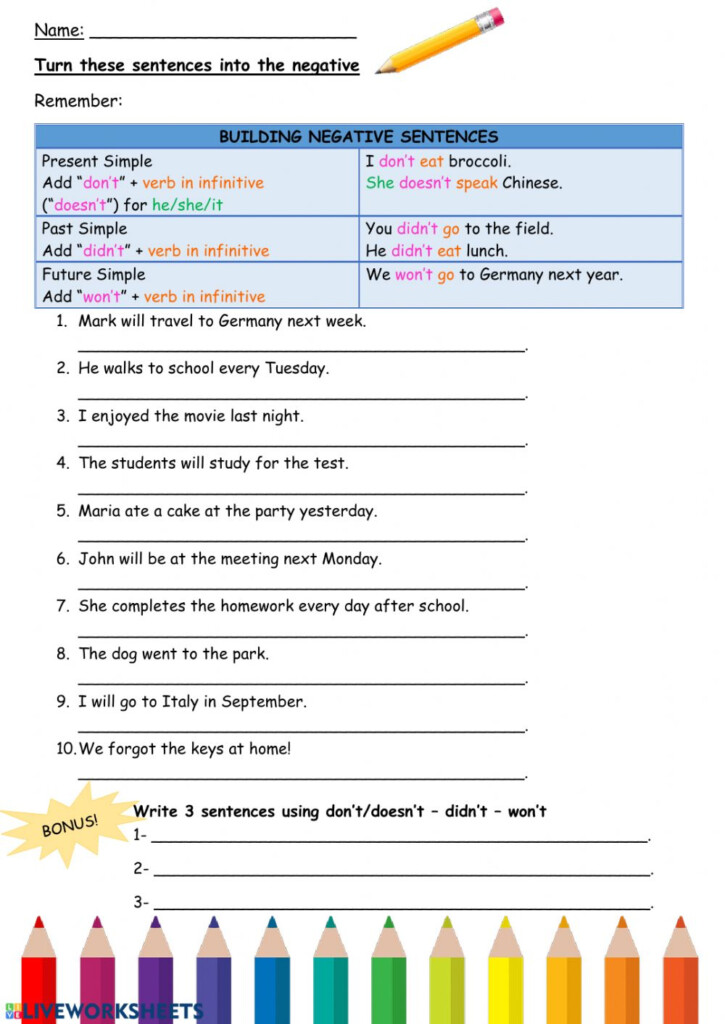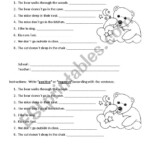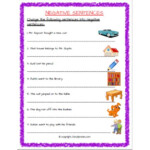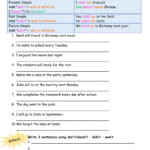Negative Sentences Worksheet For Class 4 – Simple Sentence Worksheets allow your child to practice writing simple sentences by copying words and then tracing them over. These activities are especially helpful as they allow your child to learn and retain parts of speech while they copy. They can also trace gray words, which are often the subject of sentences.
Simple sentences do not contain dependent or subordinating clauses
Subordinate clauses are included in a sentence to provide more information about the independent clause. They are not distinct sentences and don’t convey the same meanings as the independent clause. Some examples of dependent clauses are adjectives and adverbs. These clauses are usually joined with a subordinating conjunction.
Subordinate clauses are sometimes referred to by the term dependent clauses. They act as modifiers for independent clauses, providing additional details or establishing time or cause. They can also be used as examples to illustrate a particular idea. These clauses can be joined to subordinating conjunctions and relative pronouns.
It is important to differentiate between independent and subordinate clauses in order to avoid writing fragments. A semicolon must precede the dependent clause “when it rains” in Seattle. A subordinating conjunction of another type is “while”, which is used in “before” clauses.
Subordinate clauses are used in sentences when the independent clause is more than one word long. These are familiar and common words that give meaning to independent clauses. In addition to subordinating clauses, you can use relative clauses to modify an independent clause. Relative clauses have a subject (antecedent) and a verb.
Independent clauses may contain compound parts of speech. Examples of compound parts are predicates, verbs, compounds, and complex subjects. Both simple and complex are possible. A complex sentence, on the other hand, is made up of multiple independent clauses and requires the use of subordinating clauses.
Compound sentences do contain dependent or subordinating clauses
Complementary sentences can contain dependent clauses or subordinating ones. They can be made by adding more than one clause to a sentence. The writer can choose to place the clauses in the desired order. A dependent clause follows a comma, while an independent clause is not separated by a comma.
Compound sentences are the most complex types of sentences. These sentences are composed of at least two independent clauses and one to three dependent clauses. These sentences have more independent clauses than simple ones. They are often formed by joining two independent clauses with a comma.
A dependent clause, also known as a subordinate clause, depends on a preceding clause to give meaning to the sentence. Subordinating conjunctions such as after, but, once, and because are often used to precede these clauses. In complex sentences, they are also preceded by a coordinating conjunction.
Although subordinating clauses may be placed at the beginning of sentences, they are not required. If you prefer, they can be placed at the end. It is not against the rules of adult grammar. These words are frequently found in compound sentences.
When complex sentences contain more than one independent clause, they use a subordinating or dependent clause to add additional information. However, they still have a subject and a verb. Subordinating conjunctions and subordinating clauses are most useful for including important ideas or expressing precise information.
Compound sentences are formed by connecting two simple sentences
A compound sentence is made up of two independent clauses joined by a coordinating conjunction. A conjunction is a combination that adds one sentence to the next. It can also include an object or modifier. These sentences are commonly used in discussions, and they can be a lot of fun to read.
To form a compound sentence, you must have two subjects and two verbs. The first independent clause should always have capital letters, while the second should be written in lowercase. When composing a compound sentence, punctuation is important. A sentence that is not grammatically correct and difficult to understand will be rejected.
Compound sentences are formed by connecting two simple and independent sentences with a coordinating conjunction. Although they have a different structure from simple sentences, both can be used as standalone sentences. The independent clause contains a subject and a predicate. A dependent clause is also found in compound sentences. This is a clause attached to an independent one.
Students can either create or read compound sentences to learn more about compound sentences. First, learn to differentiate between independent and dependent clauses. This will allow them to write compound sentences. Students can then practice reading and understanding the meaning of a compound sentence.
